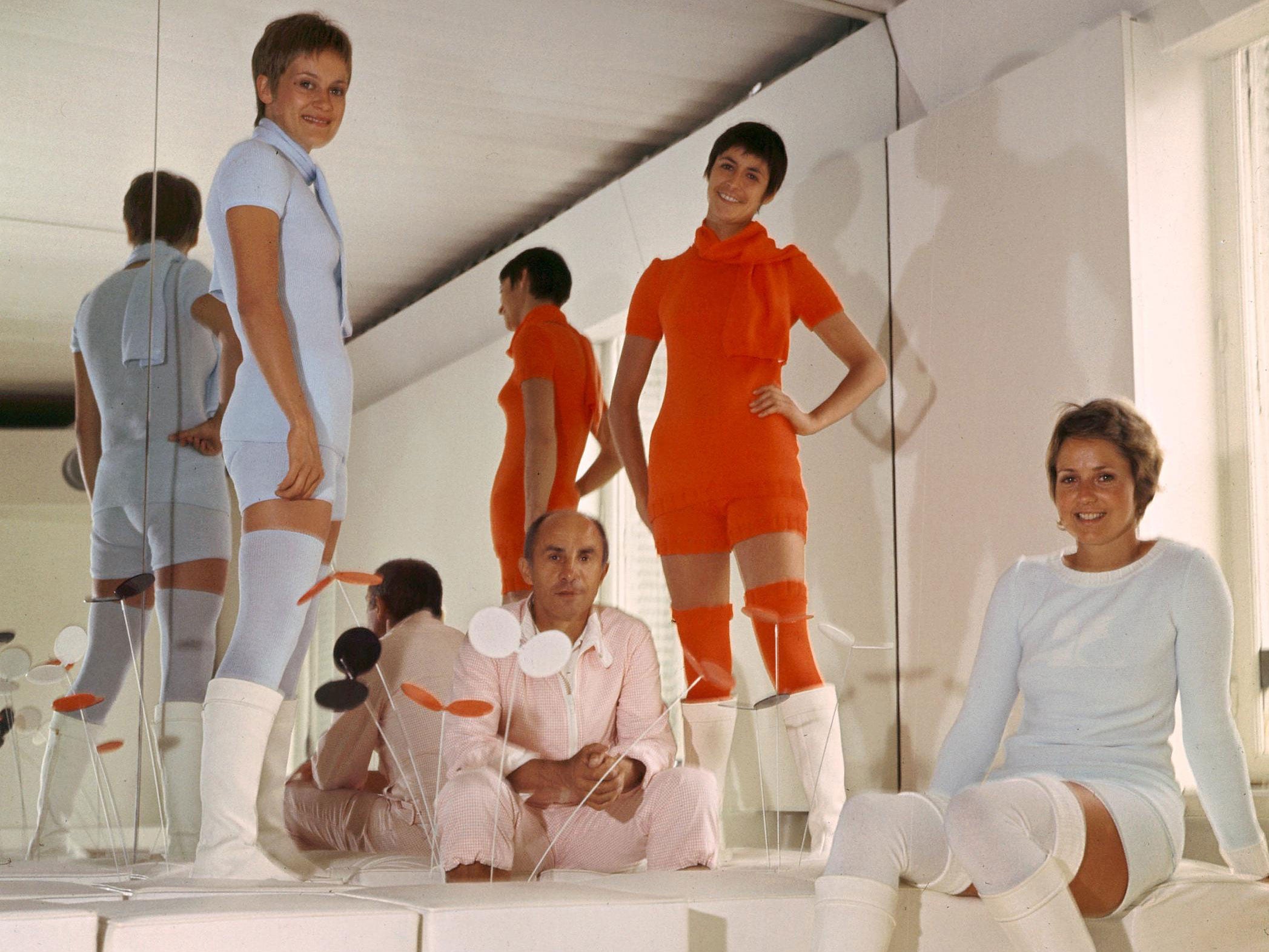André Courrèges, designer and ‘inventor’ of the miniskirt, dies, aged 92
French designer claimed he, not Mary Quant, was behind iconic Sixties symbol

No one’s fashion legacy has been more fiercely contested than that of the French couturier André Courrèges, who died on Thursday evening, aged 92, after a 30-year battle with Parkinson’s disease.
Courrèges was the inventor of the miniskirt: at least, in his eyes and those of the French fashion fraternity. London’s Mary Quant has always argued the toss, claiming she innovated the thigh-high hemline in her Chelsea boutique. The argument came down to high fashion vs street fashion, and to France versus Britain – there’s no conclusive evidence either way.
Courrèges’ story, however, doesn’t start or end with the miniskirt. After studying engineering and architecture, Courrèges decided his calling was fashion. He worked with the austere, modernist Spanish couturier Cristobal Balenciaga for 11 years, launching his own label in 1961.
His spring/summer 1964 “Space Age” collection – of severe, structural clothing betraying his interest in architecture (“Le Corbusier is my only master,” he once said) cut in squidgy, rigid double-gaberdines – brought him instant fame and acclaim.
Courrèges proposed a look that was strikingly, even aggressively bold, futuristic and unforgiving. Persil-bright white dominated, from patent leather go-go boots with square-cut peep-toes; through those miniskirts or slender trousers (Courrèges was also one of the first to offer those in high fashion). Hands were clad in pristine wrist-gloves; eyes were hidden behind plastic goggles, peering out through tiny slits. Courrèges called those “Eclipse”, underscoring his fascination with cosmonaut garb and the potentials of space travel.
Those were, of course, the fascinations of the period as a whole: Courrèges’ contemporaries were Paco Rabanne (who made clothes from shards of metal) and Pierre Cardin (whose dresses frequently resembled flying saucers).
But it is Courrèges’ vision of the future that actually lasted. Indeed, it even became the future. “Since the Sixties, there has been nothing but retro,” Courrèges presciently commented to WWD – but frequently, that retro came from Courrèges’ originals, rehashed by generation after generation of designers.
In September, the house was revived by young French designers Sébastien Meyer and Arnaud Vaillant, paying homage to Courrèges’ space-age designs, and his then-innovative notion of “industrial couture” – what we call ready-to-wear. He pioneered that, alongside Yves Saint Laurent, in 1967 – another first oft-attested, though Saint Laurent stole the march and got there a year early, in part due to worries Courrèges would gazump him. Courrèges called his ready-to-wear line “Couture Future”. It was.
Courrèges was, in a sense, a victim of his own success. His clothes are forever pinned to their mid-Sixties origins, absolutely emblematic of their time, and falling in and out of fashion. “I’ve never done frills, and that’s not going to change,” he told WWD in January 1967 – but when frills were in, Courrèges was subsequently out. In the Nineties – just as groovy Sixties styles were ferociously revived for the first time by high fashion and the mass-market alike – Courrèges retired.
Join our commenting forum
Join thought-provoking conversations, follow other Independent readers and see their replies
Comments